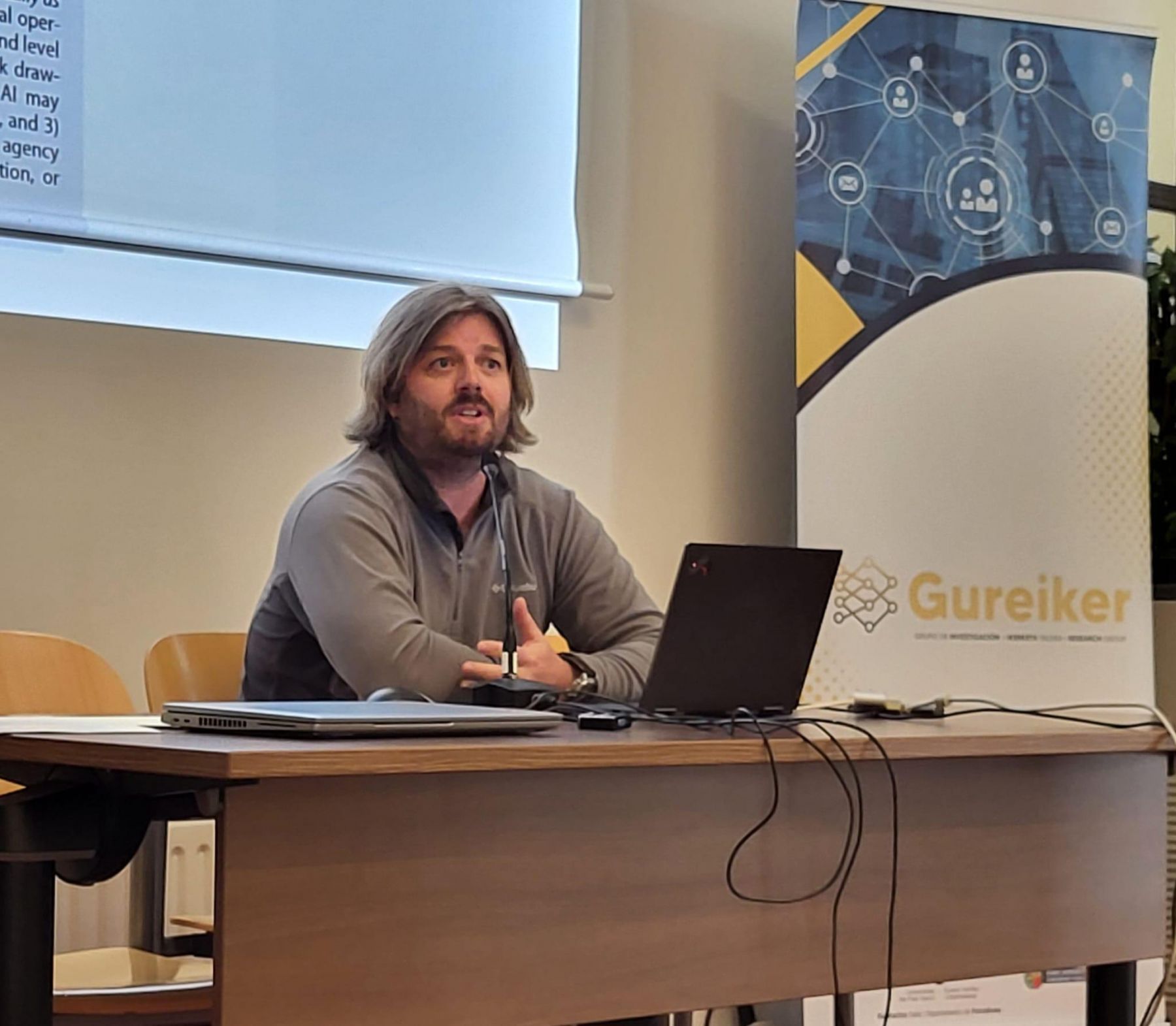The Interview
Homero Gil de Zúñiga

Due to its rapid rise in everyday life, artificial intelligence (AI) technology has become increasingly relevant to social scientists. A team led by Penn State researchers reviewed a variety of social science literature and found that studies often defined AI differently. By drawing from some of these areas and computer science, the researchers created a single definition and framework that they said they hope will be compatible across disciplines.
Lead author Homero Gil de Zúñiga, Distinguished Professor in Media Effects and AI in the Donald P. Bellisario College of Communications at Penn State, said the definition is a starting point. It is purposefully broad so it can both adapt as AI evolves and boost interdisciplinary collaboration among researchers. The work, discussed by Gil de Zúñiga in the Q&A below, was published in the journal Political Communication with co-authors Timilehin Durotoye, a doctoral student in the Bellisario College, and Manuel Goyanes, assistant professor at the University Carlos III de Madrid.
Q: How did you identify the need for an artificial intelligence definition specifically for the social sciences?
A: Gil de Zúñiga: Obviously in society today, AI is pickingup. It’s not just scientific anymore. It has a human basis for all citizens. Regardless of the country that you’re living in, AI is becoming more important. For computer scientists, it’s been around for decades. But for us who are thinking about how it’s going to be integrated in daily life, artificial intelligence is in its infancy. So, starting with computer science, we gathered different definitions from what had been written about AI. My co-authors and I found that there was not a large consensus about what AI is or what it might be. We realized that the definitions were not concrete and were often defined in a way so they fit a particular paper’s study.
Q: What is the definition that emerged from your study?
A: Gil de Zúñiga: Our definition says: AI is the tangible real-world capability of non-human machines or artificial entities to perform, task solve, communicate, interact and logically act akin to biological humans.
Q: How does your definition for AI differ from a discipline outside the social sciences?
A: Gil de Zúñiga: If someone is writing a study on Alexa, they might define artificial intelligence in a very particular way. For example, they may say AI is a machine that performs smart tasks. Or they may base it on the system’s ability to interpret external data. When it comes to journalism and communication, the definitions might abandon the machine and instead define AI as a set of algorithms designed to generate and distribute media, text and images. So, that’s why we wanted to combine all of these definitions and generate something that will work across disciplines.
Q: Is the idea that interdisciplinary connections will be easier to make among researchers from different disciplines because they will have a shared definition for AI?
A: Gil de Zúñiga: Exactly. If I’m from communication, it is going to work for me. We started with computer science, so our definition and framework are going to work for me if I’m a researcher from computer science. Our hope is that when you’re talking with a sociologist or a biologist, it will work. And I know that our working framework is not very exhaustive, but what we wanted to facilitate was a condition to say that if you’re using this definition in your theory, it will work. This is just a foundation. You can complicate it much more if you want, but this is a theory that’s going to work for everyone. The rationale is that this is a launching pad or steppingstone for doing AI research.
Q: When you mention framework, you’re talking about the study’s evaluation of AI performance and AI autonomy. Can you expand on those terms and how they work together with your AI definition?
A: Gil de Zúñiga: Beyond the definition, we constructed a simplistic theory in which we divided the two main dimensions of working with AI. One is the idea of how machines perform, and the other is how autonomous they are, meaning how well they can complete tasks with as little human input as possible. Any given intelligent entity will have different levels of performance by creating or performing certain tasks or predicting things, which is what AI does. So, we discuss three levels of performance and three levels of autonomy. So, for example, it’s just like humans. Some AIs are very intelligent, can perform lots of tasks and have a high level of autonomy. And there are some that might not be so autonomous and require more input from us. Based on these dimensions and performance levels, you can start thinking about any type of AI and apply it to any type of AI research. From there, I’m convinced that more theory will eventually become available and useful. So, with this definition and framework, we are getting the ball rolling.
Q: AI is changing so quickly. Will having a definition and framework that can be tailored or built upon be helpful to future research?
A: Gil de Zúñiga: Yes, exactly. And keep in mind that the evolution of AI is dependent on the relationship with humans, because AI is going to do what we prompt it to do and what we ask it to do. We must study how we interact with it, because if you’re not squeezing AI to its maximum capabilities, then AI will stay at the same level. That’s a very interesting characteristic of AI. It is just not what it can do, but what we areable to do with it. We are going to see an explosion of AIs. The potential impact of this technology in society is humongous. By establishing a comprehensive definition and a theoretical framework, this study paves the way for future advancements and a deeper comprehension of AI’s role in human society.

